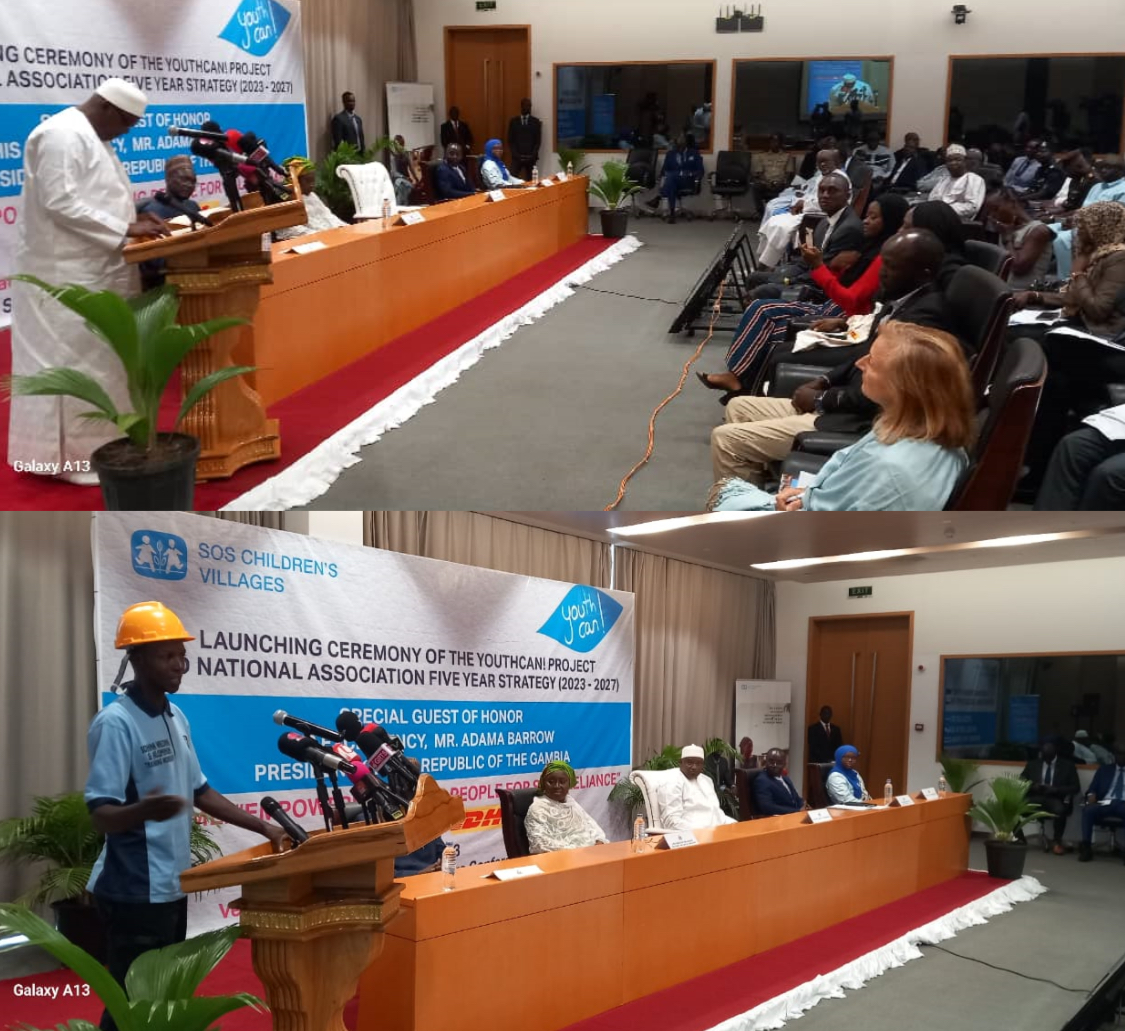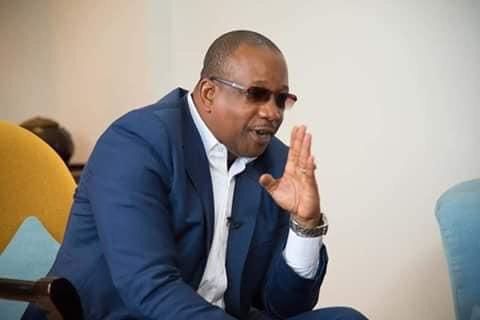By Musa S. Sheriff
The Gambian leader Adama Barrow on Monday launched the SOS Children’s Villages’ Global YouthCan Project and 5-Year Strategy 2023-2027 at the Sir Dawda Kairaba JawaraInternational Conference Centre in Bijilo.
According to the Gambian President, it’s common knowledge that the SOS villages provide access to essential services such as protection, education, health, emergency relief, and alternative care for children, who either lost or are at risk of losing parental care.
President Barrow described SOS as a genuinely philanthropic group that has supported the Government in its desire to meet its national and global targets in various ways, adding that this has been achieved through the enactment of Child and Youth-friendly laws or instruments in the country.
He pointed out that the enactment of the Children‘s Act 2005, the Sexual Offences Act 2010, the National Youth Policy 2019-2028, the Women’s Act 2010, and the creation of the National Youth Council are examples of such instruments and bodies that have links with SOS.
President Barrow stated that the Government of The Gambia has given a lot of prominence to young people by creating a Ministry responsible for youths and youth-related matters, noting that this shows the unflinching commitment of the Government to the wellbeing of young people.
The Gambian leader disclosed that, through the Ministry of Youths and Sports, significant progress has been made in creating job opportunities and employability prospects for Gambian youths.
“With the YEP Project and other projects, for instance, we are ably addressing the economic causes of irregular migration by supporting youth employment and entrepreneurship, providing employment opportunities and vocational training, supporting micro-enterprises, and creating new jobs in selected sectors through value addition and market linkages,” the President pointed out.
He promised that his government will continue to ensure that young people have all the opportunities possible to be optimally productive and self-reliant.
Mr. Barrow stated that the Government is aware that the SOS Children’s villages in The Gambia do not only work in the area of alternative care but also have programmes and projects for youth empowerment and employability in the Upper River Region, Central River, Lower River Region, and the KanifingMunicipality.
He also acknowledged that the villages have positively impacted all regions of the country through family strengthening and women empowerment for change projects aimed at preventing family separation and ensuring that children stay in their families of origin.
The President stressed that his government acknowledges the collaboration between the Kanifing Municipal Council(KMC)and SOS Children’s Villages via the Hermann Gmeiner Fund Deutschland and the German Federal Ministry.
“We have noted their involvement in a project at the Bakotehdumpsite geared towards sustainable waste management to reduce child rights violations. I have learned that the project has been renewed for a second phase, which demonstrates the relevance and successful implementation of the project’s first phase,” the Gambian leader acknowledged. He added: “By our continued strategic partnership, today, we are here to launch the Global SOS Children’s Villages Youth Can! Project and the Five-Year Working Strategy (2023-2027) of the SOS Children’s Villages in The Gambia.”
He emphasized that the YouthCan! Project is a global initiative that supports young people, who have lost parental care or are at risk of losing it, to pursue career paths and lead independent lives.
He stated that the project will strengthen their employability skills and, thereby, increase their self-employment chances and sustainability.
He disclosed that the YouthCan! Project will support more than 500 young persons with relevant employability skills in the next five years across the country.
He called on the private and public sectors, CSOs, philanthropic organisations, and UN agencies to support “this important”project geared towards empowering the bulk of the population.





